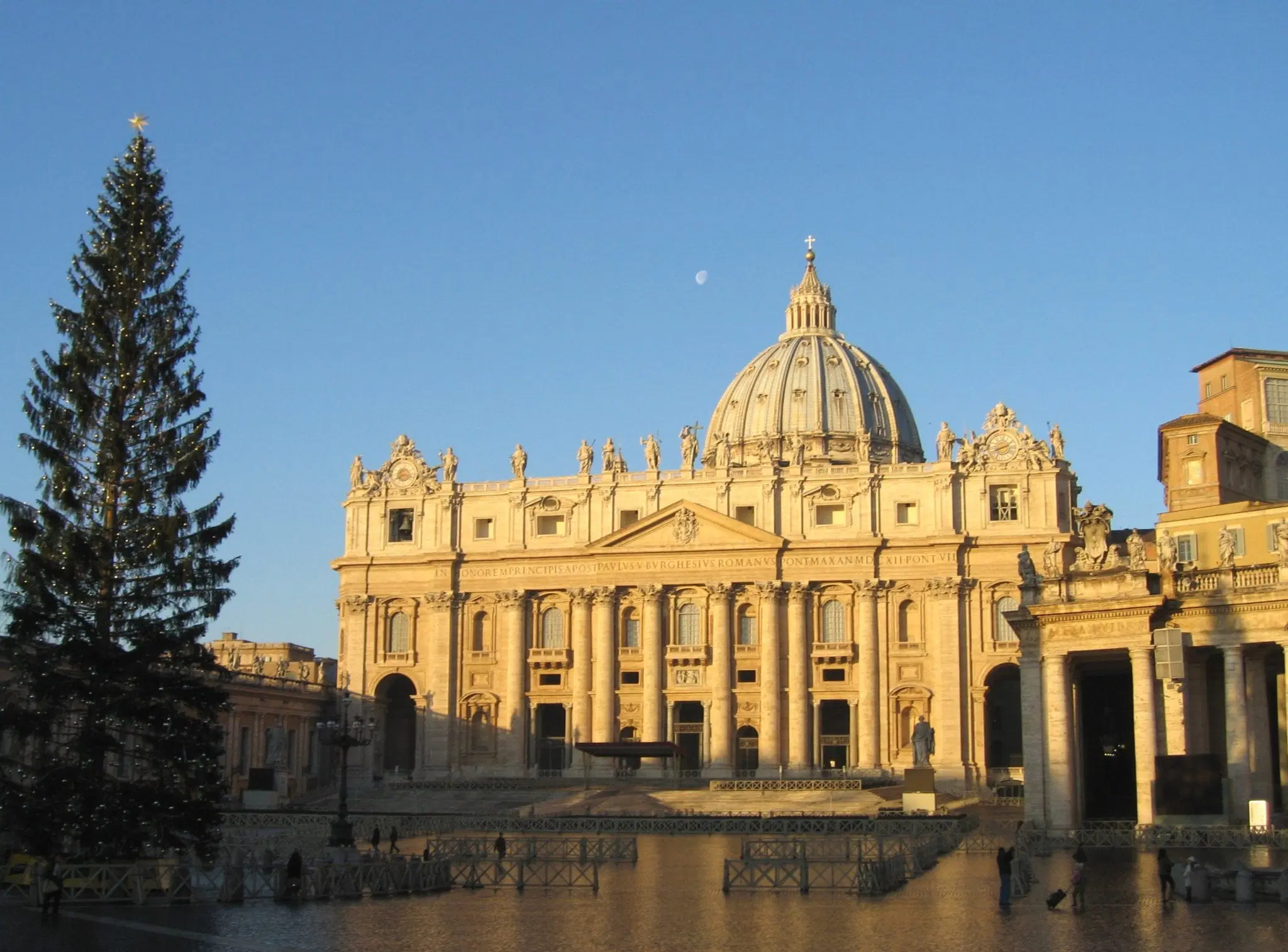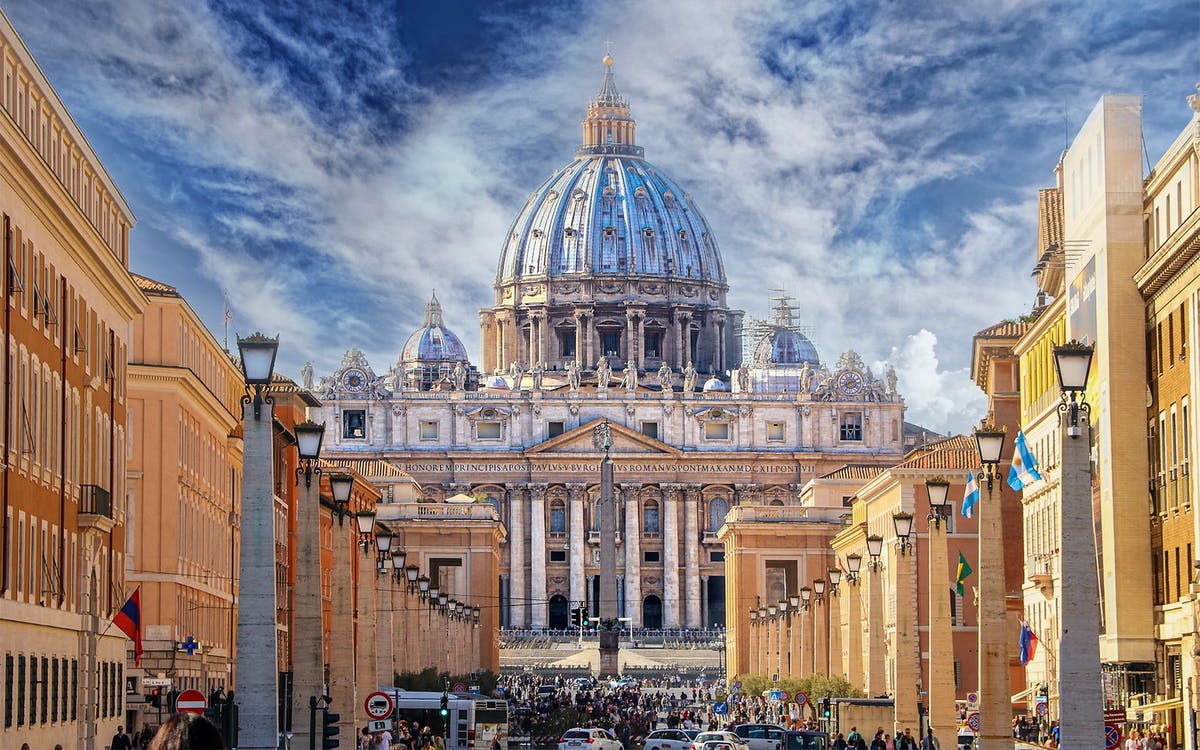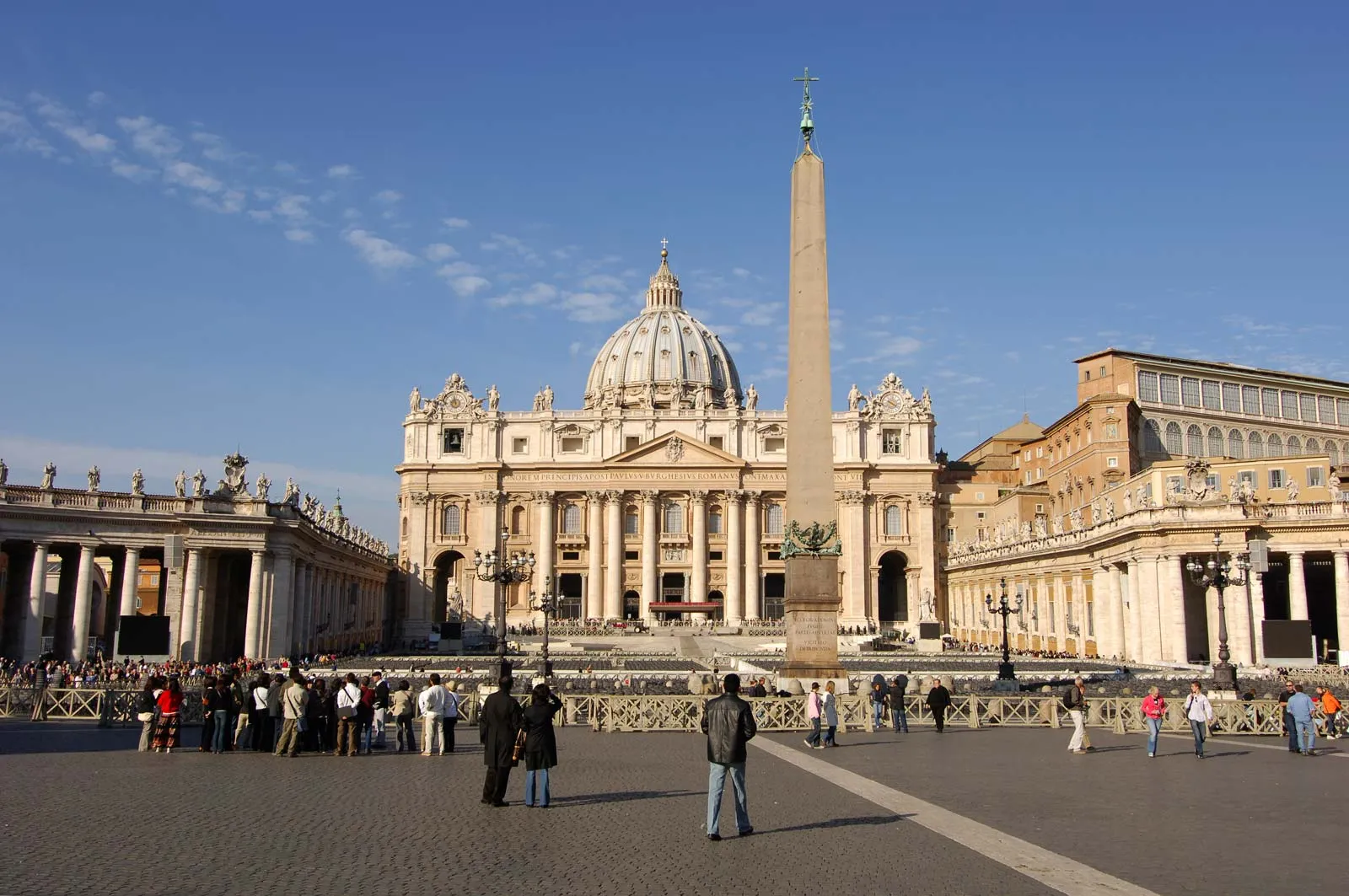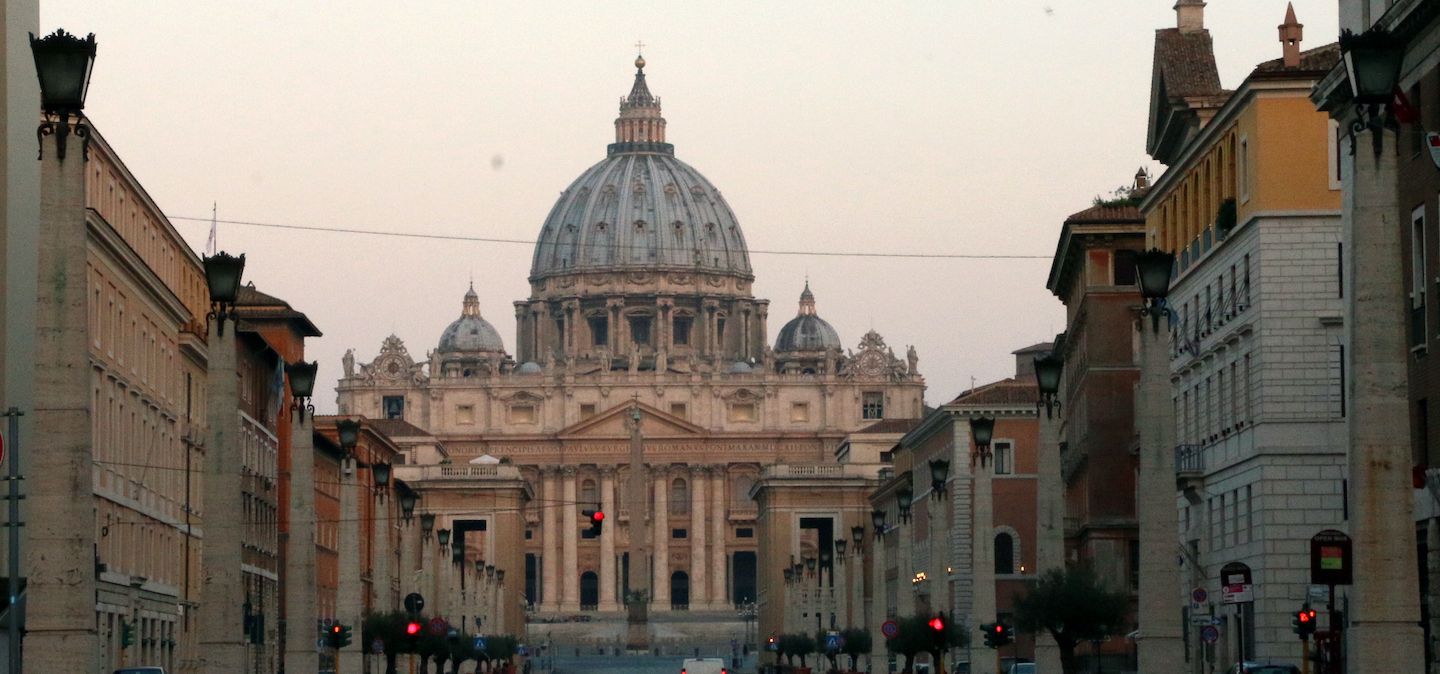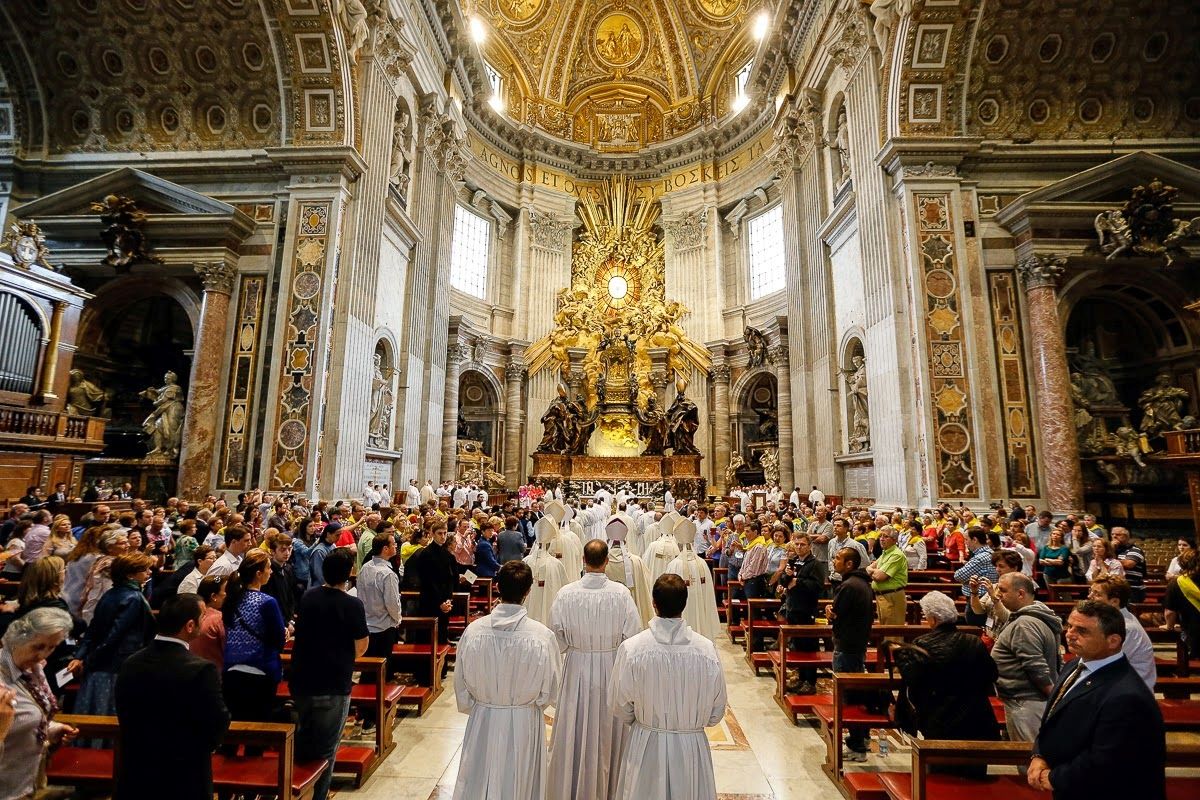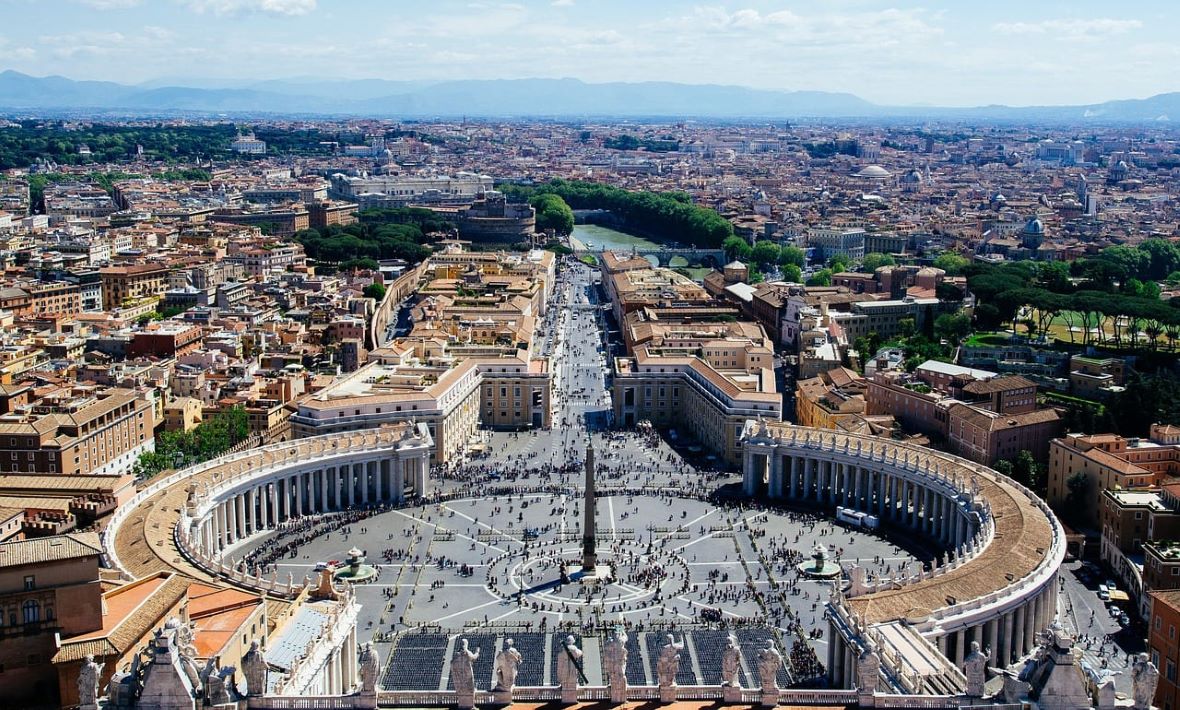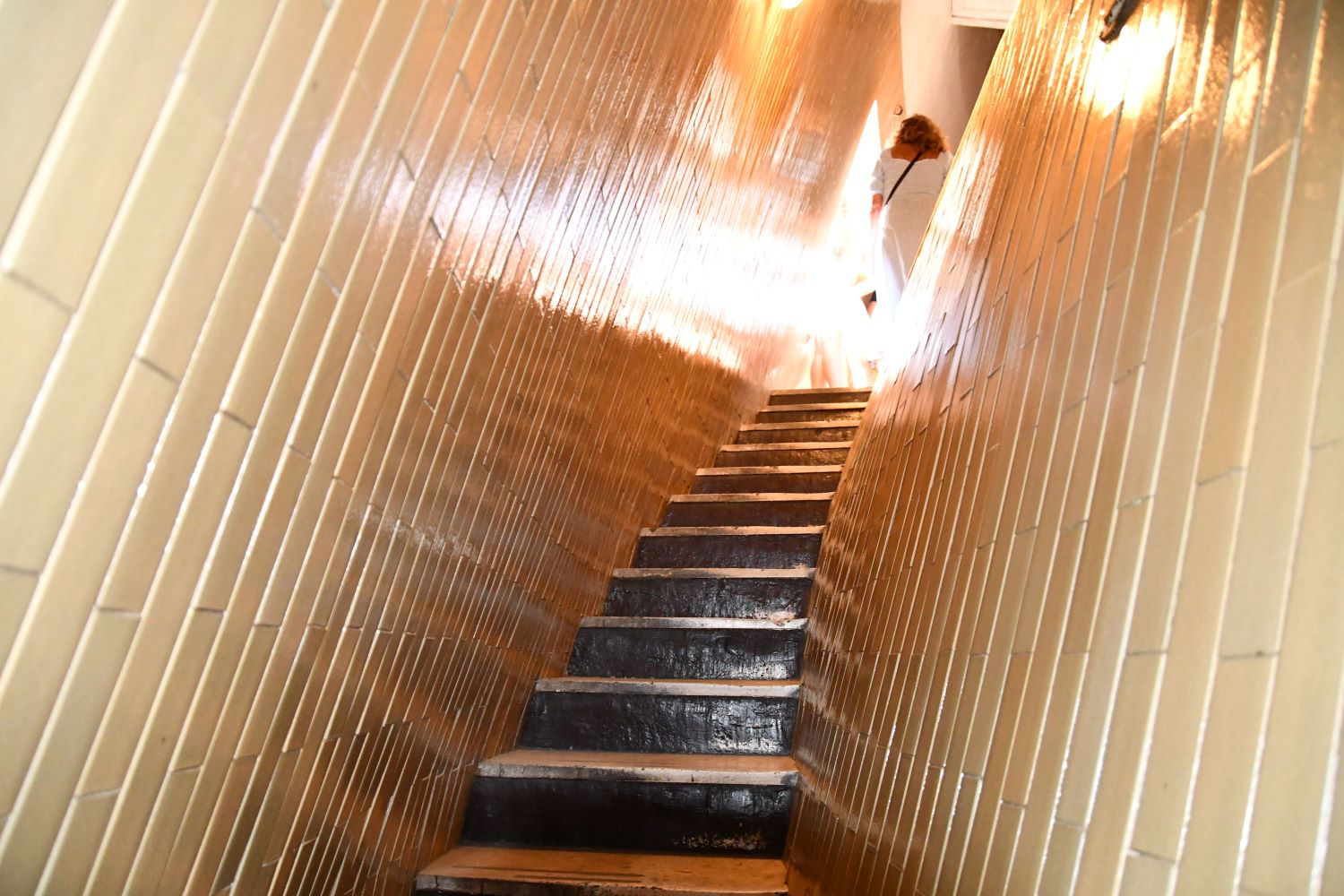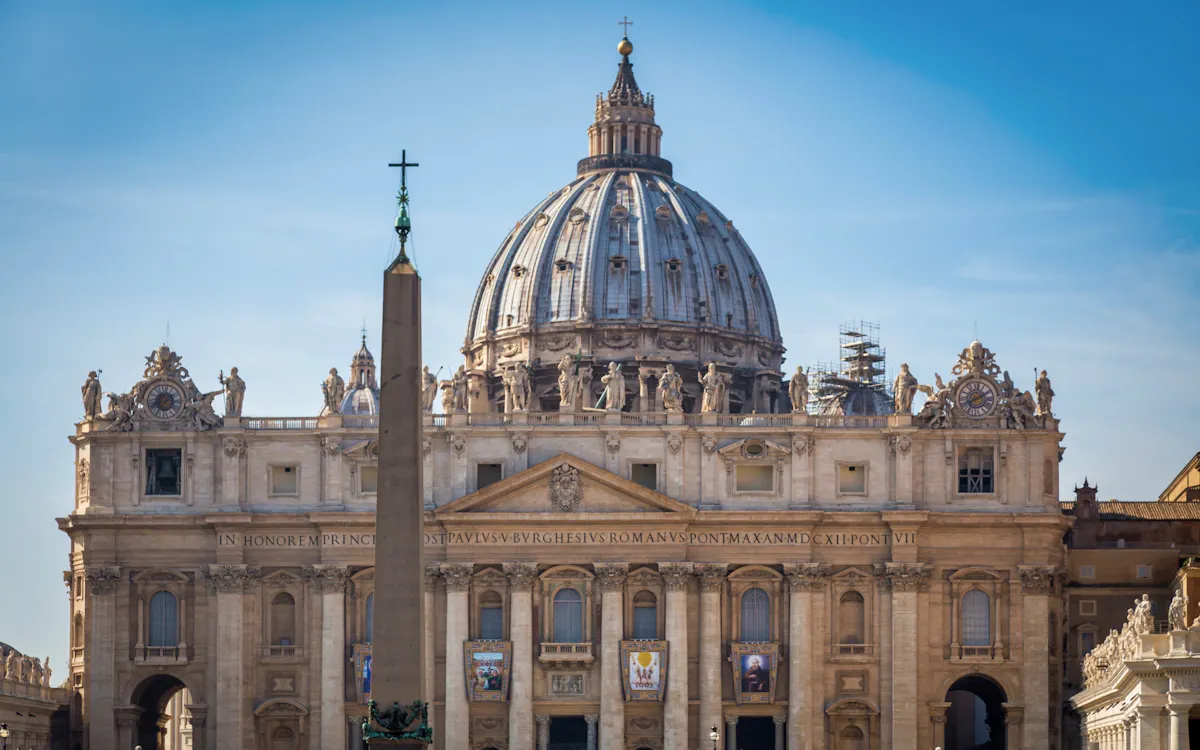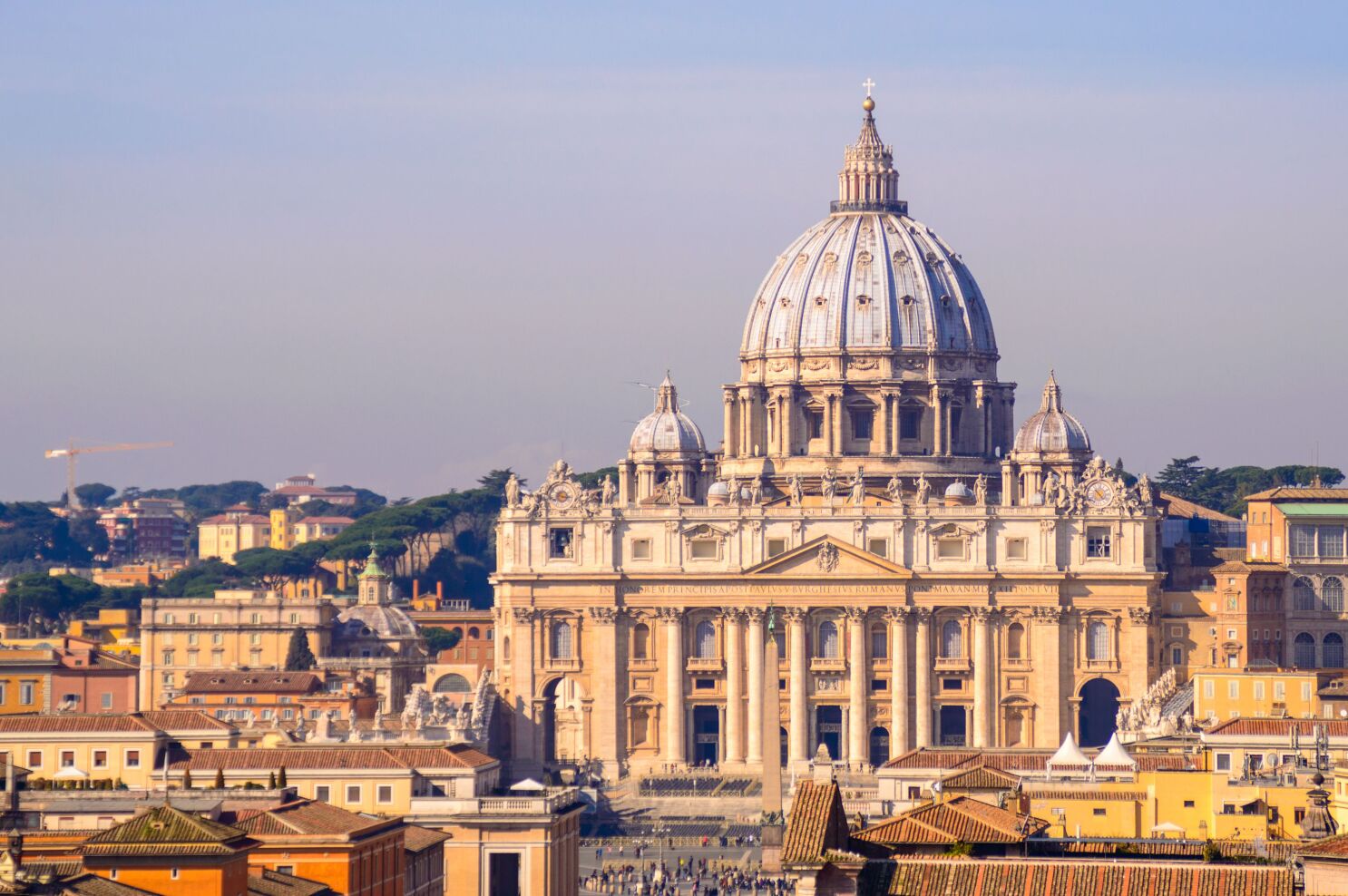Home>Arts and Culture>Why Is St. Peter’s Basilica Important


Arts and Culture
Why Is St. Peter’s Basilica Important
Published: February 10, 2024
Ericka Andersen, an editor at Christian.net, expertly merges digital strategy with content creation, focusing on faith and societal issues. Her communication skills enhance the platform's engaging narratives, fostering meaningful dialogue on belief's impact on society.
Discover the significance of St. Peter's Basilica in arts and culture. Explore its historical and artistic importance in the heart of Vatican City.
(Many of the links in this article redirect to a specific reviewed product. Your purchase of these products through affiliate links helps to generate commission for Christian.net, at no extra cost. Learn more)
Table of Contents
Introduction
St. Peter's Basilica, a renowned symbol of the Vatican City and a masterpiece of Renaissance architecture, stands as a testament to human creativity, faith, and ingenuity. This majestic structure, nestled in the heart of Rome, has captivated the hearts and minds of millions of visitors for centuries. Its significance extends beyond religious boundaries, encompassing historical, architectural, religious, and artistic realms. As we embark on a journey to explore the multifaceted importance of St. Peter's Basilica, we will unravel the layers of its rich history, delve into its architectural marvels, and contemplate its profound religious and artistic implications.
The grandeur of St. Peter's Basilica is not confined to its physical presence; it embodies the collective aspirations, beliefs, and aspirations of countless individuals who have contributed to its legacy. From the hands of celebrated architects and artists to the unwavering devotion of pilgrims, this iconic structure has been shaped by the convergence of human endeavor and spiritual reverence. As we delve into the historical, architectural, religious, and artistic significance of St. Peter's Basilica, we will gain a deeper appreciation for its enduring impact on the world stage.
Read more: Who Designed St. Peter’s Basilica
Historical significance of St. Peter's Basilica
The historical significance of St. Peter's Basilica is deeply rooted in the annals of Christianity and the evolution of the Vatican City. Its origins can be traced back to the 4th century when the first basilica was constructed over the burial site of Saint Peter, one of the twelve apostles of Jesus Christ. This initial structure, commissioned by Emperor Constantine, served as a focal point for early Christian worship and pilgrimage.
However, as the centuries unfolded, the need for a grander and more imposing edifice became evident. In the 16th century, Pope Julius II initiated the ambitious project to replace the old basilica with a new architectural marvel that would reflect the grandeur and authority of the Catholic Church. The task of designing this monumental undertaking was entrusted to some of the most illustrious architects of the time, including Donato Bramante, Michelangelo, Carlo Maderno, and Gian Lorenzo Bernini.
The construction of the new St. Peter's Basilica spanned over a century, witnessing the reigns of numerous popes and the tumultuous events of the Renaissance and Baroque periods. The basilica's completion in 1626 marked a pivotal moment in the history of architecture, as it stood as a testament to human ambition, artistic innovation, and unwavering religious devotion.
Throughout its existence, St. Peter's Basilica has been a witness to significant historical events, including papal coronations, imperial proclamations, and the gatherings of pilgrims from across the globe. It has weathered the tides of time, surviving wars, political upheavals, and the ever-changing landscapes of human civilization.
Today, St. Peter's Basilica stands not only as a religious sanctuary but also as a living monument to the enduring power of faith, resilience, and human creativity. Its historical significance transcends mere architectural splendor; it embodies the collective spirit of generations past and present, leaving an indelible mark on the tapestry of human history.
Architectural importance of St. Peter's Basilica
The architectural importance of St. Peter's Basilica transcends mere structural magnificence; it represents a pinnacle of human ingenuity, artistic innovation, and engineering prowess. Designed by a constellation of brilliant minds, including Donato Bramante, Michelangelo, Carlo Maderno, and Gian Lorenzo Bernini, the basilica stands as a testament to the enduring legacy of Renaissance and Baroque architecture.
The sheer scale and grandeur of St. Peter's Basilica are awe-inspiring. Its colossal dome, designed by Michelangelo, rises to a height of 136 meters, making it one of the tallest domes in the world. The harmonious blend of classical and Baroque elements in its design reflects the evolution of architectural styles across different epochs, creating a visual symphony that captivates the beholder.
The basilica's façade, adorned with intricate carvings and majestic columns, exudes a sense of timeless elegance and grandiosity. The sweeping colonnades, designed by Bernini, embrace visitors in a welcoming embrace, symbolizing the inclusive nature of the Catholic Church. The interplay of light and shadow, the meticulous attention to detail, and the seamless integration of artistic embellishments elevate St. Peter's Basilica to a realm of architectural transcendence.
The interior of the basilica is a treasure trove of artistic splendor and architectural marvels. The nave, flanked by majestic aisles and adorned with ornate chapels, leads the eye toward the baldachin, a monumental bronze canopy designed by Bernini, which marks the final resting place of St. Peter. The intricate mosaics, soaring arches, and masterful sculptures that adorn the interior create a sensory feast for visitors, inviting them to contemplate the divine and the human in harmonious unity.
The structural innovations employed in the construction of St. Peter's Basilica, including the use of colossal columns, expansive domes, and innovative engineering techniques, have set a benchmark for architectural excellence. The basilica's enduring influence on subsequent architectural endeavors is a testament to its enduring importance in the annals of architectural history.
In essence, St. Peter's Basilica stands as a crowning achievement of human creativity and technical prowess, a living testament to the enduring legacy of architectural brilliance that continues to inspire and captivate visitors from around the world.
Religious significance of St. Peter's Basilica
The religious significance of St. Peter's Basilica transcends its physical grandeur, encompassing profound spiritual, symbolic, and historical dimensions. As the epicenter of the Catholic faith and a revered pilgrimage site, the basilica holds immense religious importance for millions of believers worldwide.
At the heart of St. Peter's Basilica lies the hallowed resting place of Saint Peter, one of the foremost apostles of Jesus Christ and the first Bishop of Rome. The veneration of Saint Peter's tomb, located directly beneath the basilica's high altar, imbues the sacred space with an aura of sanctity and reverence. For devout Catholics, this site represents a tangible link to the origins of their faith, evoking a profound sense of spiritual connection and historical continuity.
The basilica's role as the seat of the papacy further amplifies its religious significance. The majestic chair of Saint Peter, an ancient relic enshrined within the basilica, symbolizes the apostolic succession and the unbroken lineage of pontiffs who have shepherded the Catholic Church through the ages. The solemn rituals and ceremonies conducted within the hallowed confines of St. Peter's Basilica, including papal coronations, liturgical celebrations, and the adoration of sacred relics, reinforce its status as a sacred locus of Catholic worship and tradition.
Moreover, the basilica serves as a beacon of unity for the global Catholic community. Pilgrims from every corner of the world converge upon St. Peter's Square, drawn by a shared devotion to their faith and a desire to partake in the spiritual aura of the Vatican. The jubilant gatherings during papal audiences, the reverent observance of religious rites, and the collective prayers offered within the basilica's sacred precincts foster a sense of communal solidarity and spiritual communion among believers.
The religious symbolism woven into the architectural elements of St. Peter's Basilica further underscores its profound spiritual significance. The soaring dome, with its celestial motifs and heavenly frescoes, evokes the majesty of God's kingdom, inspiring awe and reverence in those who gaze upon its celestial splendor. The monumental statues, intricate mosaics, and sacred artworks adorning the basilica's interior serve as visual parables, conveying timeless religious narratives and moral teachings to the faithful.
In essence, St. Peter's Basilica stands as a living testament to the enduring power of faith, the continuity of tradition, and the unifying force of religious devotion. Its religious significance extends far beyond its physical dimensions, permeating the hearts and souls of believers who seek solace, inspiration, and spiritual fulfillment within its sacred precincts.
Artistic significance of St. Peter's Basilica
The artistic significance of St. Peter's Basilica transcends mere aesthetic beauty; it embodies a profound synthesis of divine inspiration, human creativity, and cultural expression. From its awe-inspiring architecture to its exquisite artworks, the basilica stands as a testament to the enduring legacy of artistic genius and spiritual devotion.
The basilica's interior serves as a veritable treasure trove of artistic splendor, captivating visitors with its masterful fusion of painting, sculpture, and decorative arts. The soaring nave, flanked by majestic aisles adorned with opulent chapels, leads the eye toward the basilica's crowning artistic marvels. The monumental baldachin, designed by Gian Lorenzo Bernini, rises like a gilded symphony of bronze, commanding the central space beneath the basilica's majestic dome. Its intricate spiraling columns, ornate embellishments, and celestial motifs evoke a sense of ethereal grandeur, inviting contemplation of the divine presence.
The basilica's chapels, each a testament to the artistic virtuosity of renowned masters, house a wealth of priceless artworks. The awe-inspiring Pietà, sculpted by a young Michelangelo, exudes a poignant beauty that transcends the boundaries of time and space, capturing the tender sorrow of the Virgin Mary cradling the lifeless body of Christ. The delicate play of light and shadow, the fluidity of form, and the emotive power of the sculpture evoke a profound sense of empathy and spiritual introspection in the beholder.
The basilica's richly adorned ceilings and walls, adorned with resplendent frescoes and intricate mosaics, narrate timeless religious narratives and moral allegories. The masterful brushstrokes of artists such as Raphael, Bernini, and Carracci infuse the sacred space with a sense of divine splendor, elevating the viewer's gaze toward the celestial realm. The interplay of color, form, and symbolism creates a visual symphony that transcends linguistic barriers, speaking directly to the soul and igniting a sense of wonder and reverence.
The exterior of St. Peter's Basilica, with its majestic façade and sweeping colonnades, serves as a testament to the harmonious fusion of architectural and artistic elements. The intricate carvings, majestic statues, and ornate reliefs adorning the basilica's exterior pay homage to the rich tapestry of Christian iconography and the enduring legacy of artistic craftsmanship.
In essence, St. Peter's Basilica stands as a living testament to the enduring power of artistic expression, spiritual transcendence, and cultural heritage. Its artistic significance resonates across the ages, inviting visitors to embark on a profound journey of aesthetic discovery and spiritual enlightenment within its sacred precincts.
Read more: What Country Is St. Peter’s Basilica In
Influence on Catholicism and Christianity
St. Peter's Basilica exerts a profound and enduring influence on Catholicism and Christianity, shaping the religious, cultural, and spiritual landscape of the faithful across the globe. As the spiritual epicenter of the Catholic Church and a revered symbol of Christian heritage, the basilica's influence extends far beyond its physical presence, permeating the collective consciousness of believers and serving as a beacon of unity, tradition, and faith.
The basilica's significance as the final resting place of Saint Peter, the revered apostle and the first Bishop of Rome, holds immense theological and historical weight within the Catholic tradition. The veneration of Saint Peter's tomb, enshrined beneath the basilica's high altar, serves as a tangible link to the apostolic origins of the Church, reinforcing the apostolic succession and the unbroken lineage of papal authority. This sacred connection to the apostolic era imbues the basilica with a sense of historical continuity and spiritual authenticity, affirming its pivotal role in preserving the foundational tenets of Catholicism.
Furthermore, St. Peter's Basilica stands as a testament to the enduring legacy of Catholic devotion and piety. Pilgrims from every corner of the world embark on spiritual journeys to the Vatican, drawn by a deep-seated reverence for the basilica's sacred relics, hallowed artworks, and the palpable aura of sanctity that permeates its sacred precincts. The jubilant gatherings during papal audiences, the reverent observance of liturgical rites, and the collective prayers offered within the basilica's hallowed confines foster a sense of communal solidarity and spiritual communion among believers, transcending geographical and cultural boundaries.
The basilica's architectural and artistic splendor serves as a visual testament to the grandeur and majesty of God, inspiring awe and reverence in the hearts of the faithful. The celestial motifs, intricate mosaics, and masterful sculptures adorning the basilica's interior convey timeless religious narratives and moral teachings, inviting contemplation of the divine and the human in harmonious unity. The monumental baldachin, the awe-inspiring Pietà, and the resplendent frescoes narrate the sacred stories of Christianity, evoking a profound sense of spiritual introspection and reverence.
In essence, St. Peter's Basilica stands as a living embodiment of the enduring influence of Catholicism and Christianity, serving as a spiritual lodestar that guides the faithful through the annals of history and into the boundless realms of faith. Its influence transcends the confines of time and space, resonating with believers as a testament to the enduring power of tradition, devotion, and the unifying force of religious faith.

